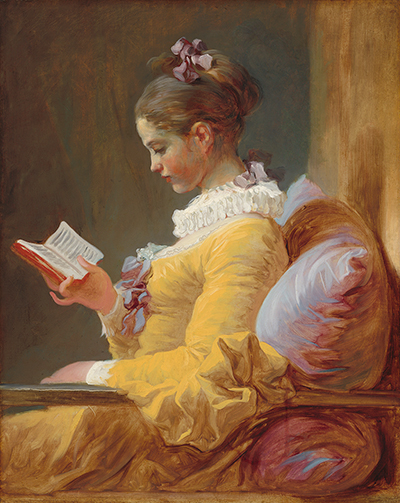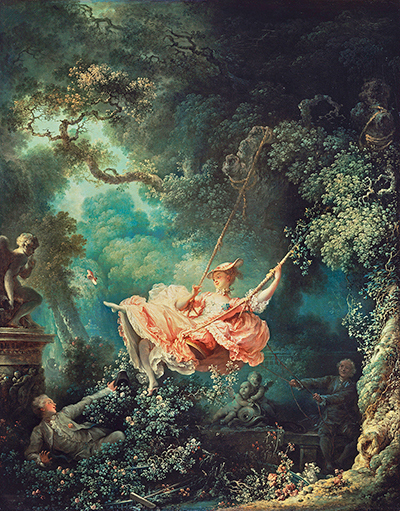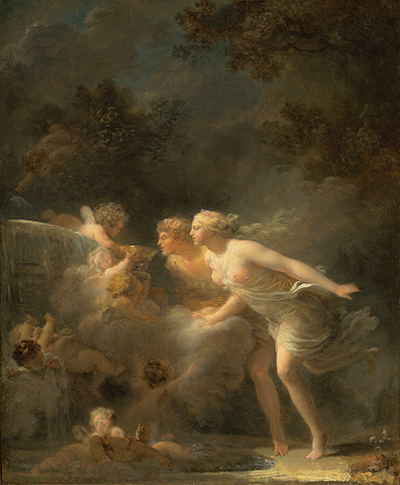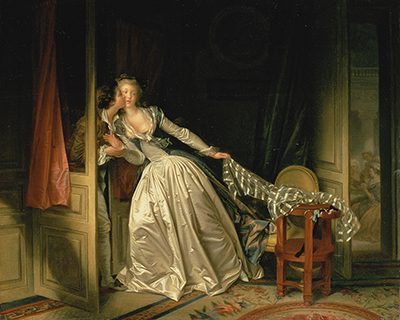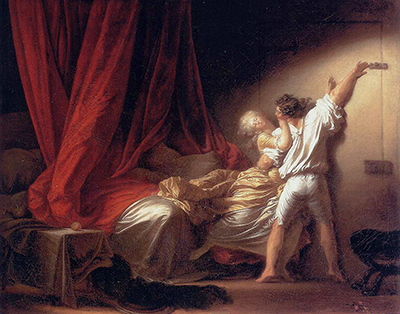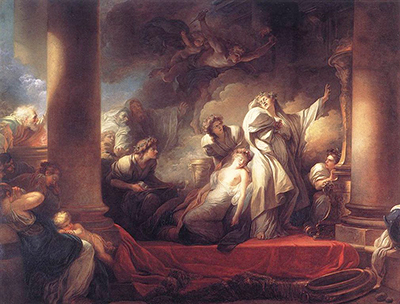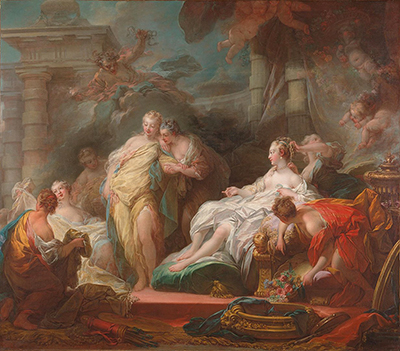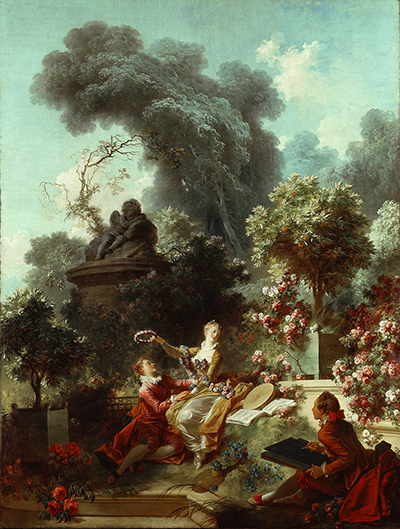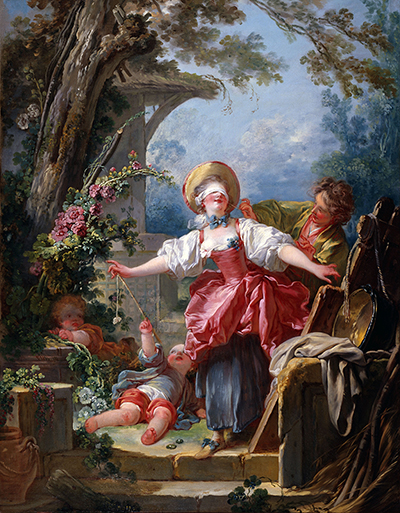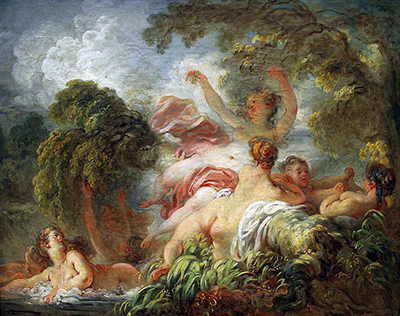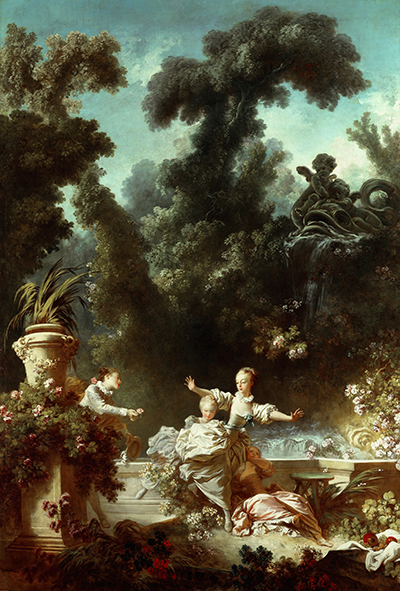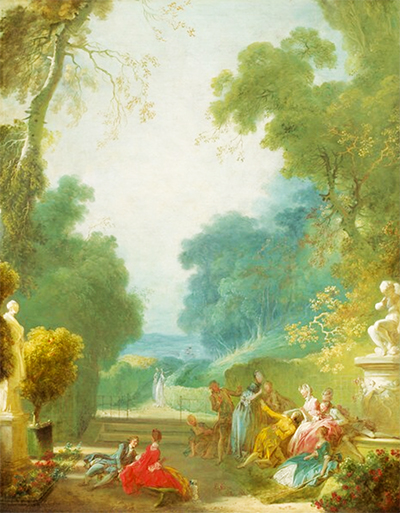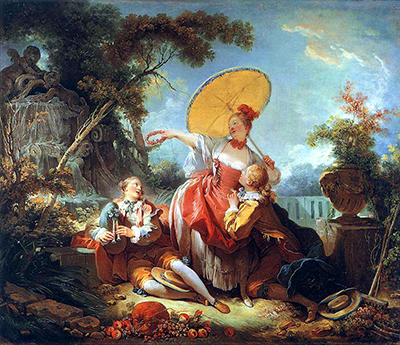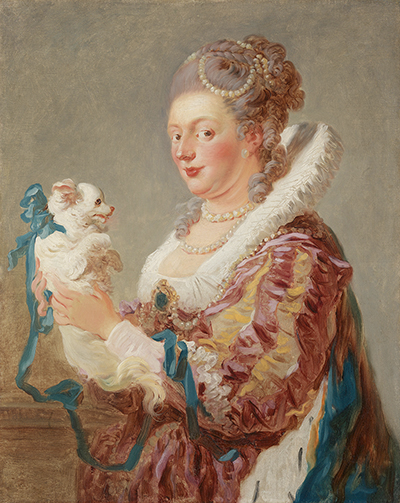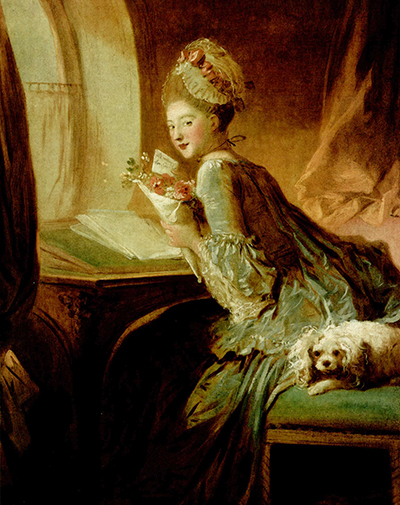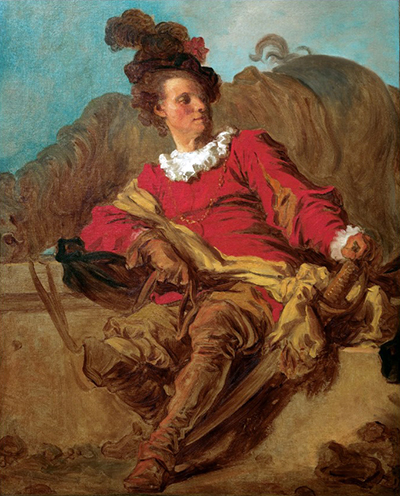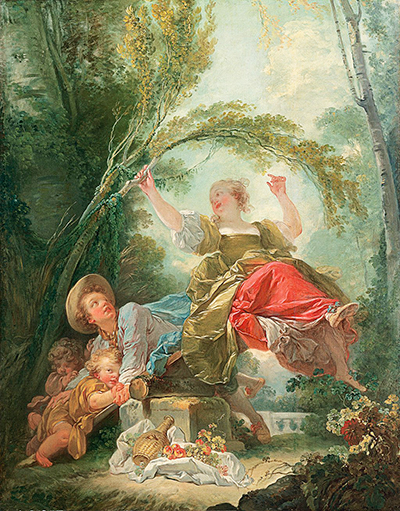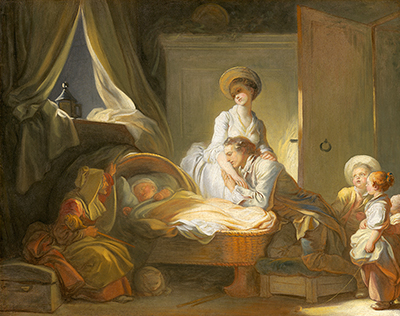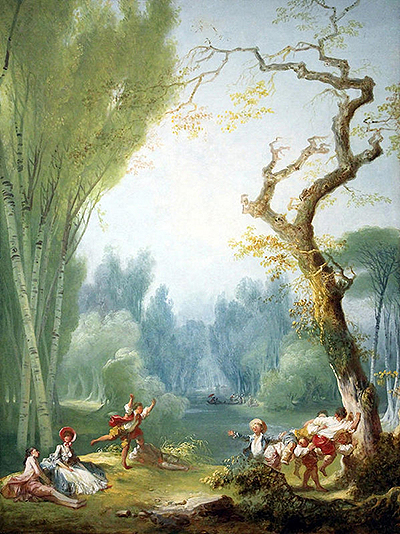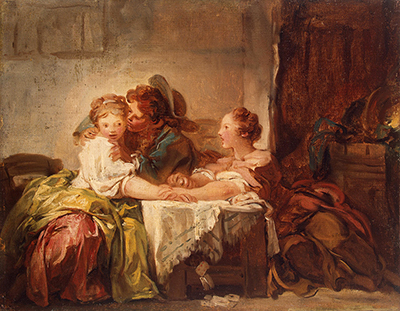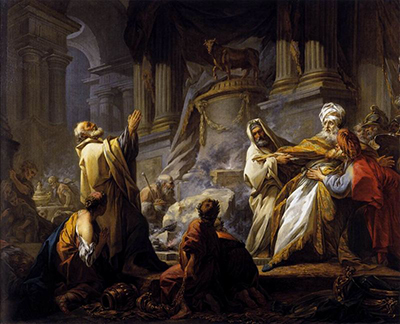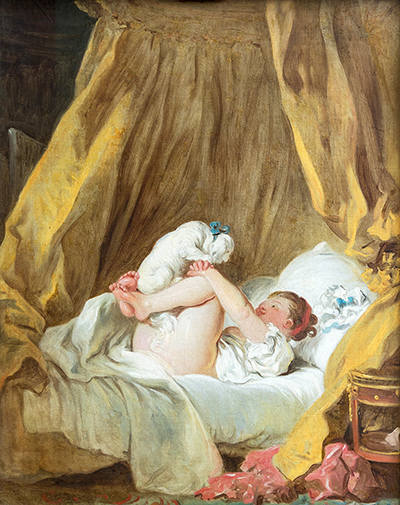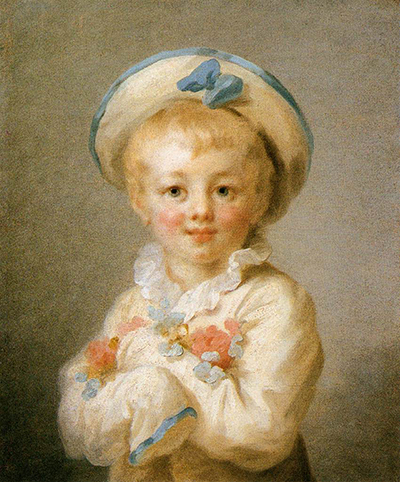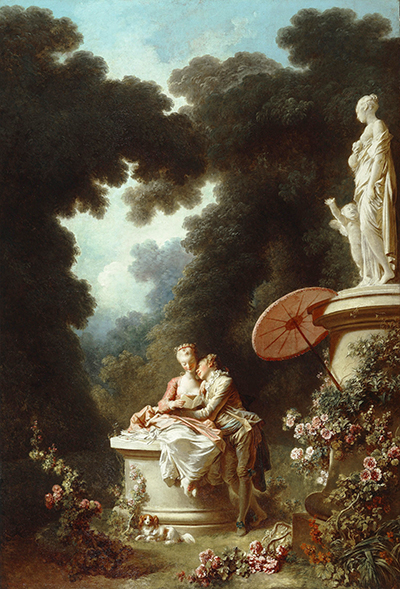Jean-Honore Fragonard is considered one of the true stars of the Rococo movement, a stylish full of flourishes and elaborate touches. His work appeared in the mid to late 18th century and he remains one of the most famous French artists of all time.
As a young adult, having just turned eighteen, Fragonard was to be taken under the wing of Francois Boucher, one of the all time great French artists, and from that point onwards this budding young student could not have wished for a better introduction to the techniques and theories of fine art. In his favour were some extraordinary levels of natural talents that Boucher quickly realised held an immense amount of potential and that with the right guidance, a successful career would surely result. This was an artist who followed a path stylistically that others also pursued at the time, but Fragonard stood out for the layering of form and meaning within his pieces, a certain touch of class that ensured his paintings reached a level above his closest competition.
He is certainly not the first artist to contrast the lives of men and women within art, and won't be the last but he had a unique ability to deliver it within charming scenes which proved fairly popular then both with critics and the art public, and is particularly the case today (in truth his career went ignored for nearly half a century before being rediscovered and placed back in the upper echelons of French art). The artist liked to put together some detailed backgrounds which allowed his figures to enjoy themselves within stunning backdrops, such as colourful gardens or intimate spots in the countryside. You will find some delicate foliage intwined around his scenes, as well as paths and sculptures. He did not pay attention to the poorer elements of society, which would have brought some criticism upon him, but prefered to create an atmosphere of purity, as if something from religious scripture. Many were passionate supporters of art which distracted them from their own reality and took them to a place of imagination, just as the best literature can do.
Despite being lesser known during his own lifetime, his re-emergence within the interests of art historians some years later was early enough for the Impressionists to take note of his work. The delicate use of light, combined with bold, confident brush strokes is known to have inspired a number of this movement's members, even though the two styles are relatively different. Whilst promoting new ideas and artistic techniques, the Impressionist movement was still both passionate and aware of what had gone before and understood the need to take its best qualities into their own new direction. Most intriguingly, his grand niece was actually a member of the group herself, Berthe Morisot, who was a key member of this collective and one of three women who helped shape its development. Aside from that, Renoir is also known to have been particularly inspired by Fragonard's paintings, but he himself was not always directly in line, stylistically, with the group. It is quite possible that Fragonard's career is as well known now as it ever has been, partly aided by the more democratic, open minded view of different art movements that we enjoy today.



